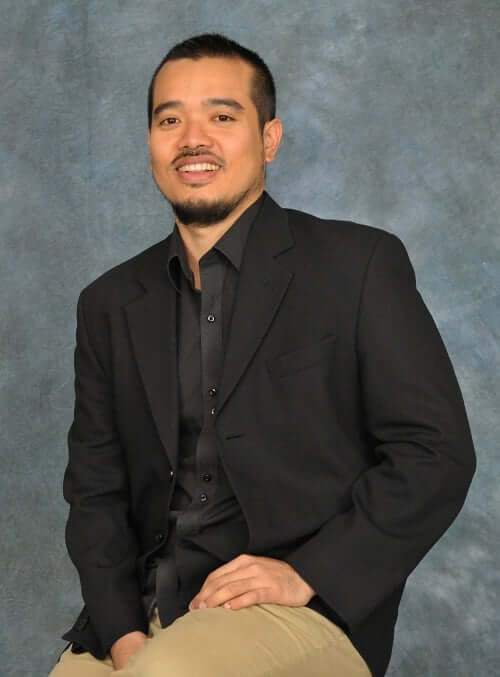As a person of Chinese heritage, this time of the Lunar New Year is a special time for Kevin Bathman.
Yet, he will admit that growing up, he actually observed dates of significance from the Indian cultural calendar more frequently.
You see, Kevin also has Indian heritage.
With part Chinese and part Indian heritage, Malaysian-born Kevin Bathman is ‘Chindian’, and in Sydney at least, he is the best known person from the Chindian community.
His work in carefully documenting the stories of others like him of this very special joint ethnicity, an ongoing project that he calls The Chindian Diaries, is well-known in the multicultural community, and has been reviewed many times in this very publication.
The online endeavour of The Chindian Diaries became an opportunity not only to meet others like himself from across the globe, but also to understand his own identity better.
The deeply personal stories that he gathered unearthed cultural clashes, struggles and misunderstandings, as his subjects learned to straddle two distinct identities. Yet bubbling over and above these, themes shone through of enduring love and acceptance and peaceful co-existence.
“Of course, it was also a way of telling our own stories to help others in the mainstream understand us: to let them know who we are, how we think and operate,” Kevin told Indian Link. “We don’t do this often enough, or well enough.”
The larger by-product for Kevin, was that it allowed for viewers to gain a sense of exploration within themselves, of their own cultural identity.
Expanding on this is Kevin’s latest exhibition Chindia, which brings together visual artists of Chinese and Indian heritage. The exhibition explores similar issues of cultural identity, but goes a step further in looking at ways in which these issues inform national identity.
Chindia, held at the Gaffa Gallery in Sydney’s CBD, is part of the Sydney Chinese New Year Festival 2018. The project is supported by the City of Sydney.
It all started for Kevin when he was picked to design one of the lunar animals for this year’s celebration. (The Tiger that sits on Pier 6 currently, is designed by him.) He used the funding that he received late last year from the City of Sydney to devise the exhibition, and it was accepted as part of the Lunar New Year festival.
Amongst the artists in the exhibition is Anindita Banerjee, whose video Fade is based on an alpona (floor decoration or rangoli) from her native Bengal. Anindita filmed herself creating an alpona pattern, but with water, and on hot concrete, so that it vanished within a few minutes. The ephemeral piece is a statement about cultural otherness: the cultural other’s voice must remain in constant dialogue if it has to have lasting impact, or it will die away.

Artist Texta Queen (who creates portraits with felt tip markers), views her identity as defined – and empowered – equally by both her native Indian culture and that of her adopted home Australia. In Roots, she depicts herself astride an elephant trunk that morphs out of a tree trunk, the roots of which caught her attention as she completed a residency on Tappan land.
For Anurendra Jegadeva, former journalist and writer, art has now become the medium to make comments on current affairs, through the use of stories, histories and legends. In Red Wedding, Anurendra explores recent Chinese incursions into the South China Sea and the Malaysian government’s muted objections to their presence. In his newer portraits, Anurendra uses parchment paper from a vintage London magazine, describing life in the colonies of Australia, as a canvas on which to make comments about contemporary Australian life.
The works in Chindia, as Texta Queen concludes, are a continuation of dialogues that hyphenated Australians are having in their lives already.

Along the sidelines of the exhibition, the artists in Chindia also got an opportunity to share their own family stories as well as inspirations and motivations with the general public. In another segment, Stories from the Diaspora, six short films were screened based on the lived experiences from the diaspora communities in Jamaica, Singapore, Malaysia and Samoa.
It is quite clear that to Kevin, showcasing artists that use their craft to enrich cultural identity, promotes shared values and empowers communities. Thus the arts are not only a self-affirming activity that helps us to understand – and challenge – our cultural life, they also allow us to reveal and enhance our ‘sameness’ and thus promote tolerance.
“Perhaps we don’t exploit nearly enough, the socially relevant role that the arts play in our lives,” says Kevin. “In my work as a creative professional, whether in exhibiting my own work, curating the works of others, providing platforms for others, or putting festivals together, the end goal is always social change.”

Even in his day job in multicultural health, this multifaceted person is constantly looking for ways to incorporate art. His award-winning work with the Pink Sari breast cancer awareness campaign is but one example: one project brought the breast screen message to the South Asian community through a photographic exhibition of survivors, and another project used a song-writing competition towards the same end.
“Art is a wonderful tool to start conversations,” he concludes.
There is no doubt that thanks to Chindia, this Lunar New Year will become a particularly memorable one for Kevin Bathman.



